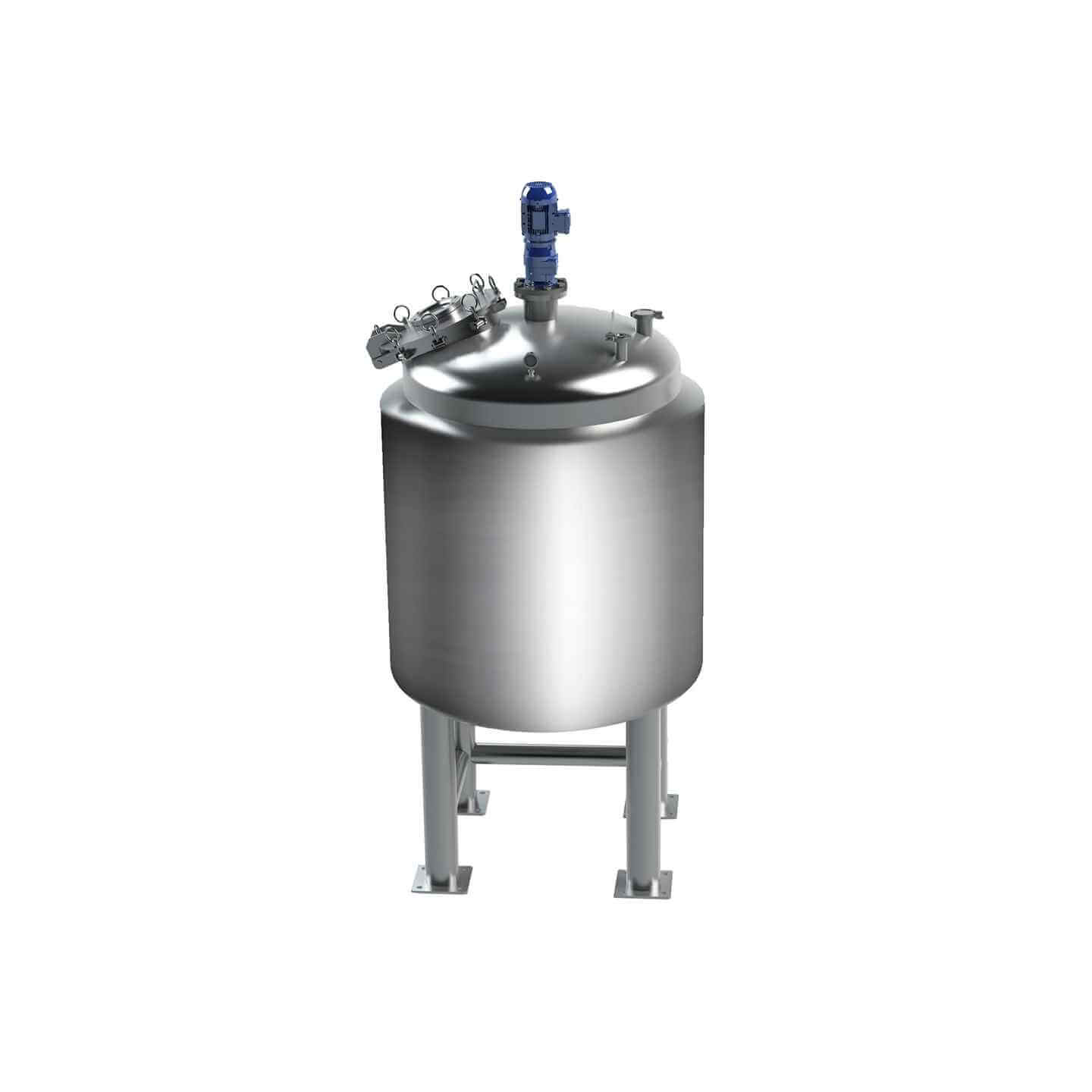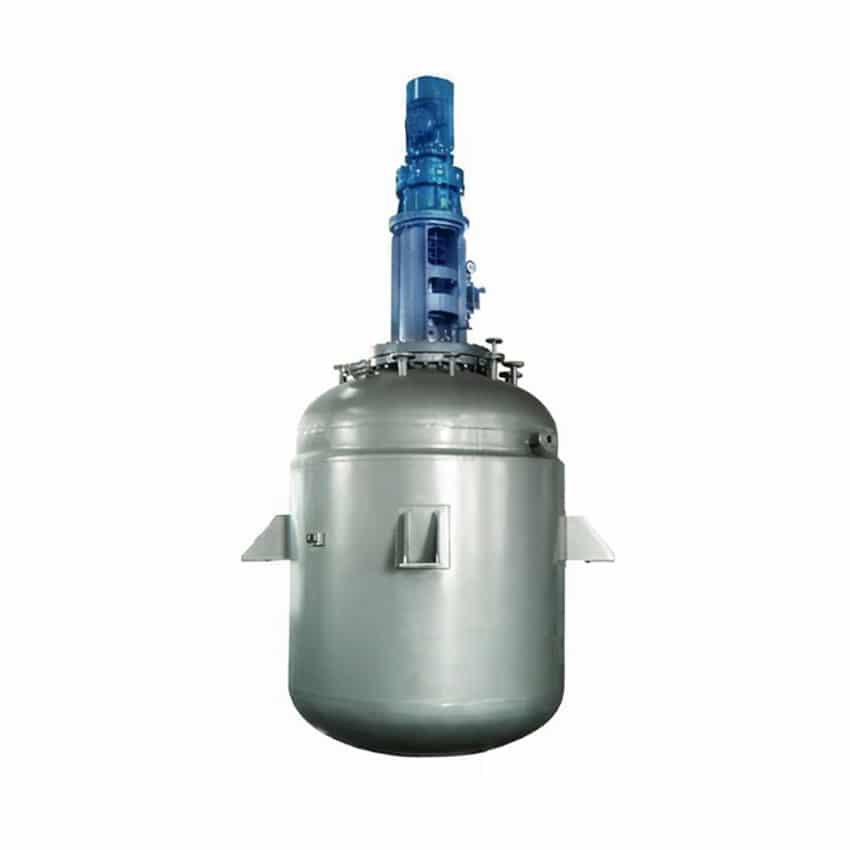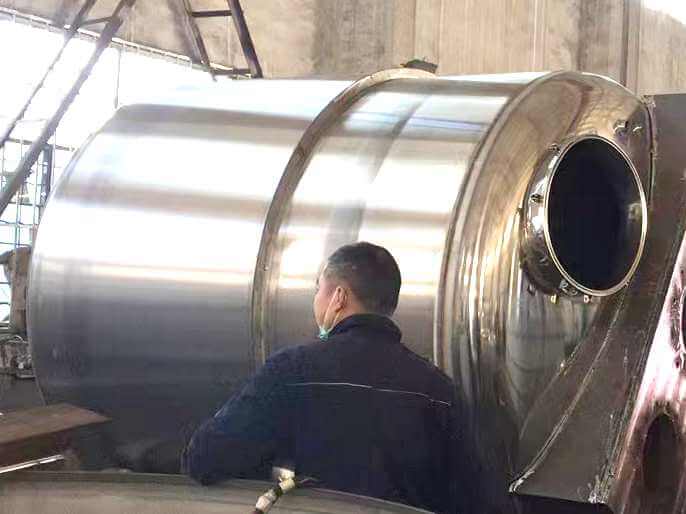

Jacketed Reactor
Jacketed reactor: used in the chemical industry, pharmaceutical industry and food industry, and other fields
Material
glass, stainless steel (316, 304), carbon steel, others
Capacity (L)
10-10000+
Mixing system
anchor, paddle, frame and others
Heating system
electric heating, oil heating and others
Jacketed reactors can be divided into steam heating reactors and heat transfer oil heating reactors according to different heating media, both of which are widely used in medicine, the chemical industry, plastics, rubber, building materials, food, and other industries. Corrosion, no environmental pollution, no need for automatic boiler heating, ease to use, and so on.
Request a quoteThe jacketed reactor is mainly composed of a reaction vessel, a stirring device, a transmission device, a shaft seal device, a support and a manhole, a process nozzle, and some related accessories. The stirring device of the jacketed reactor is mainly composed of a stirrer and a stirring shaft. Its stirring form is usually determined by the design of the process. Its main devices are anchor devices, paddle devices, worm gear devices, propelling devices, or frame devices.

Structural design of the jacketed reactor
The mechanical design of the jacketed reactor is carried out after the process design. The conditions given in the process generally include kettle volume, maximum working pressure, working temperature, medium corrosivity, heat transfer area, stirring mode, speed and power, size and orientation of the process nozzle, etc. In addition, when designing the jacketed reactor, attention must also be paid to its heating method, cooling method, and sealing device.
The transmission device of the jacketed reactor is set up to drive the stirring device, and it is mainly composed of motor parts, reducer parts, coupling parts, and transmission shaft parts. The number, specifications, or other requirements of the jacketed reactor openings can be designed and manufactured according to the user’s needs. Jacketed reactors are generally classified according to the form of jacket heating. They are mainly divided into different types of chemical reactors: electric heating rod heating, steam heating, thermal oil circulation heating, etc. The electric heating reaction kettle heats the heat-conducting oil of the corresponding components through its electric heating rod and uses its heat-conducting oil as a medium to transfer heat to the materials in the kettle. The jacketed reactor is heated by filling a certain amount of steam into its jacket, and it needs to be equipped with a boiler. However, its hardware investment is slightly larger, but its energy consumption during operation is smaller than that of ordinary electrically heated jacketed reactors.
The materials of jacketed reactors generally include carbon manganese steel, stainless steel, zirconium, nickel-based (Hastelloy, Monel) alloys, and other composite materials. The jacketed reactor can be made of stainless steel materials such as SUS304 and SUS316L. Jacketed reactor stirrers include anchor type, frame type, paddle type, turbine type, scraper type, and combined type. The rotating mechanism can use a cycloidal pinwheel reducer, continuously variable speed reducer variable frequency speed regulation, etc., which can meet various needs. Special reaction requirements for materials. The jacketed reactor is heated with a jacket and can be heated with hot water or steam. The sealing device can adopt sealing structures such as mechanical seals and packing seals. Heating and cooling can adopt structures such as jackets, half pipes, coils, and Miller plates.

The reaction solvent is placed in the inner layer of the jacketed reactor to perform a stirring reaction, and the interlayer can be connected to different cold and heat sources (frozen liquid, hot water, or hot oil) to perform cyclic heating or cooling reactions. Through the interlayer of the jacketed reactor, inject constant-temperature (high or low-temperature) hot melt media or cooling media to heat or cool the materials in the jacketed reactor at a constant temperature. At the same time, the stirring reaction can be carried out under normal pressure or negative pressure according to the requirements. The materials react in the jacketed reactor, and the evaporation and reflux of the reaction solution can be controlled. After the reaction is completed, the material can be released from the discharge port at the bottom of the kettle, making the operation extremely convenient.
As a typical main reaction equipment commonly used in the chemical industry, the jacketed reactor performs reaction polymerization by stirring, heating, cooling, dispersing, and mixing a variety of materials. The use of jacketed reactors has gradually become a trend. They can add efficiency to scientific and chemical engineering work in many fields. At the same time, the reaction time can also be shortened and the reaction stability can be ensured. With the development of science and technology, jacketed reactors will have more new applications and innovative solutions.


